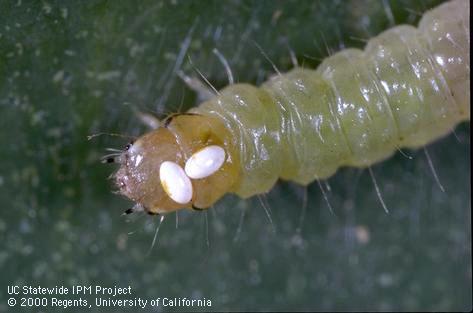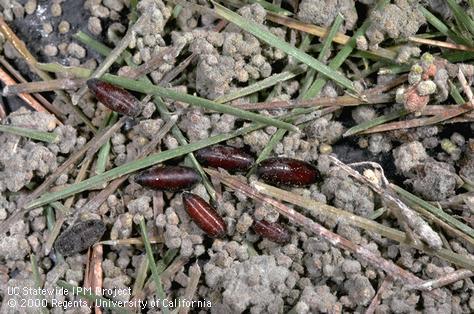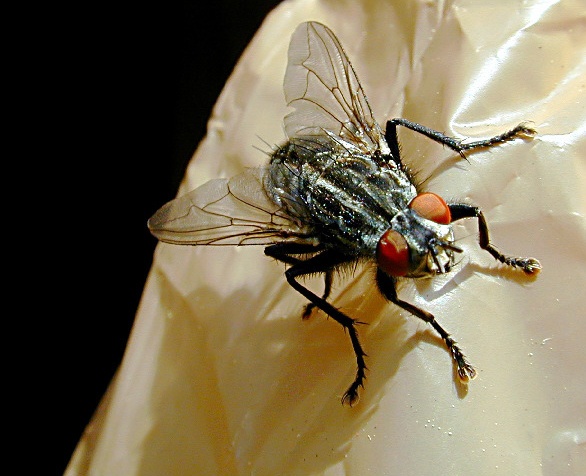



The family Tachinidae is the most important family of parasitic flies providing biological control. Tachinid larvae are internal parasites of immature beetles, butterflies, moths, sawflies, earwigs, grasshoppers, or true bugs. Adults measure between 3 and 14 mm (<1/2 inch), are often dark, robust, hairy and resemble houseflies, but with very stout bristles at the tips of their abdomens. Egg laying varies considerably. In some species, eggs are deposited on foliage near the host insect, and the maggots are ingested during feeding by the host after they hatch. In other species, the adult fly glues eggs to the body of the host, and the maggots penetrate into the host's body after the eggs hatch. Some female tachinids possess a piercing ovipositor and insert their eggs into the host body. In all cases, tachinid maggots feed internally in their hosts and exit the host body to pupate. Pupae are commonly oblong and dark reddish. Tachinid flies complete one to several generations per year.
Colorful Trichopoda pennipes, a parasite of squash bugs,lays its oval pale eggs singly or in groups on the sides of large nymphs or adults of several species of true bugs including the southern green stinkbug and the squash bug. The larvae burrow into the bug's body where one larva will survive. When ready, the large maggot will exit the host's body and drop to the ground to pupate. The host dies soon after the maggot leaves the body.
Voria ruralis attacks various species of moths in the families Noctuidae and Pyralidae. Adult females lay one or several eggs into the host which quickly hatch and the maggot consumes the host internally. After killing its host, the larvae emerge, drop to the ground, and form oblong pupae, which are dark red and 8 mm (1/3 inch) long.
Erynnia tortricis parasitizes larvae and pupae in various lepidopterous families including amorbia, codling moth, obliquebanded leafroller, omnivorous leafroller, oriental fruit moth, peach twig borer, pink bollworm, and sunflower moth. This endoparasite lays one to several eggs on the head or thorax of host larvae. The parasitic larvae do not kill the host until after the host pupates. Parasitized moth pupae may then be recognized by the prominent Y-shaped parasite spiracles that protrude beneath the tips of the wingpads of the host pupa.